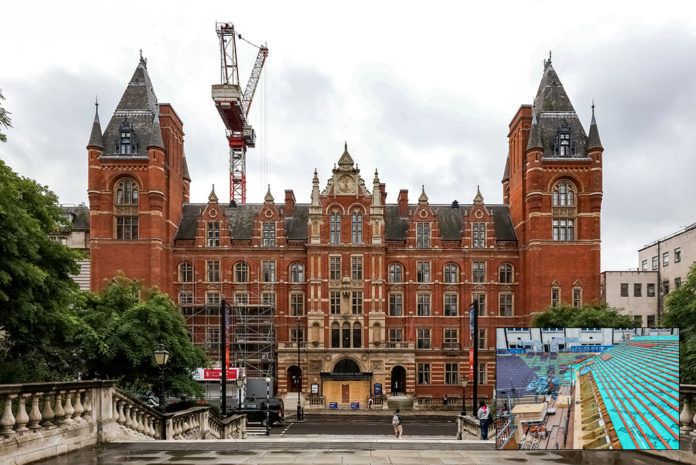The Royal College of Music in London has been given an extra layer of protection in the form of A.Proctor Group’s roofing membrane solution, Roofshield.
Since opening its doors in 1883, the College has witnessed the development of some of the world’s most talented musicians. The original Victorian building, designed by Arthur Blomfield, has continued to serve the changing needs of students, and now as part of the More Music Campaign: Reimagining the Royal College of Music building development, the campus is being transformed to enable it to continue to provide outstanding music education and facilities for musicians of the future.
Designed by architect John Simpson, the reimagined College will boast a selection of new buildings with UK construction contractor Gilbert-Ash managing the development. Specialist roofing contractor D. Harkin & Co. Roofing was appointed to carry out the roofing works to the extension, as well as a partial re-slating of the existing building.
As part of the roofing specification, D. Harkin & Co. Roofing chose the Roofshield air permeable roofing membrane, which allows even very complex pitched roofs to breathe, without the need for air gaps or secondary venting.
Danny Harkin, managing director of D. Harkin & Co. Roofing, said: “A key factor in this prestigious project was to resolve the ventilation requirements for the roofing extension. We chose Roofshield because of its superior air permeability, which removes the need for any additional mechanical ventilation and assures the highest form of protection for the new buildings. We have used Roofshield successfully on many of our projects and believe its performance to be second to none.”
The incorporation of Roofshield into a project can lead to savings in both labour and material costs, due to no VCL being required. The high-performance air permeability of Roofshield means that the roof space will have similar air changes to that of a roof using traditional eaves/ridge ventilation.
Many vapour and air permeable underlays use an airtight VP film layer to achieve their performance. The Spunbond Meltblown Spunbond structure of Roofshield allows high levels of airflow, in addition to the transport of moisture vapour, making the formation of condensation in the roof space virtually impossible.




